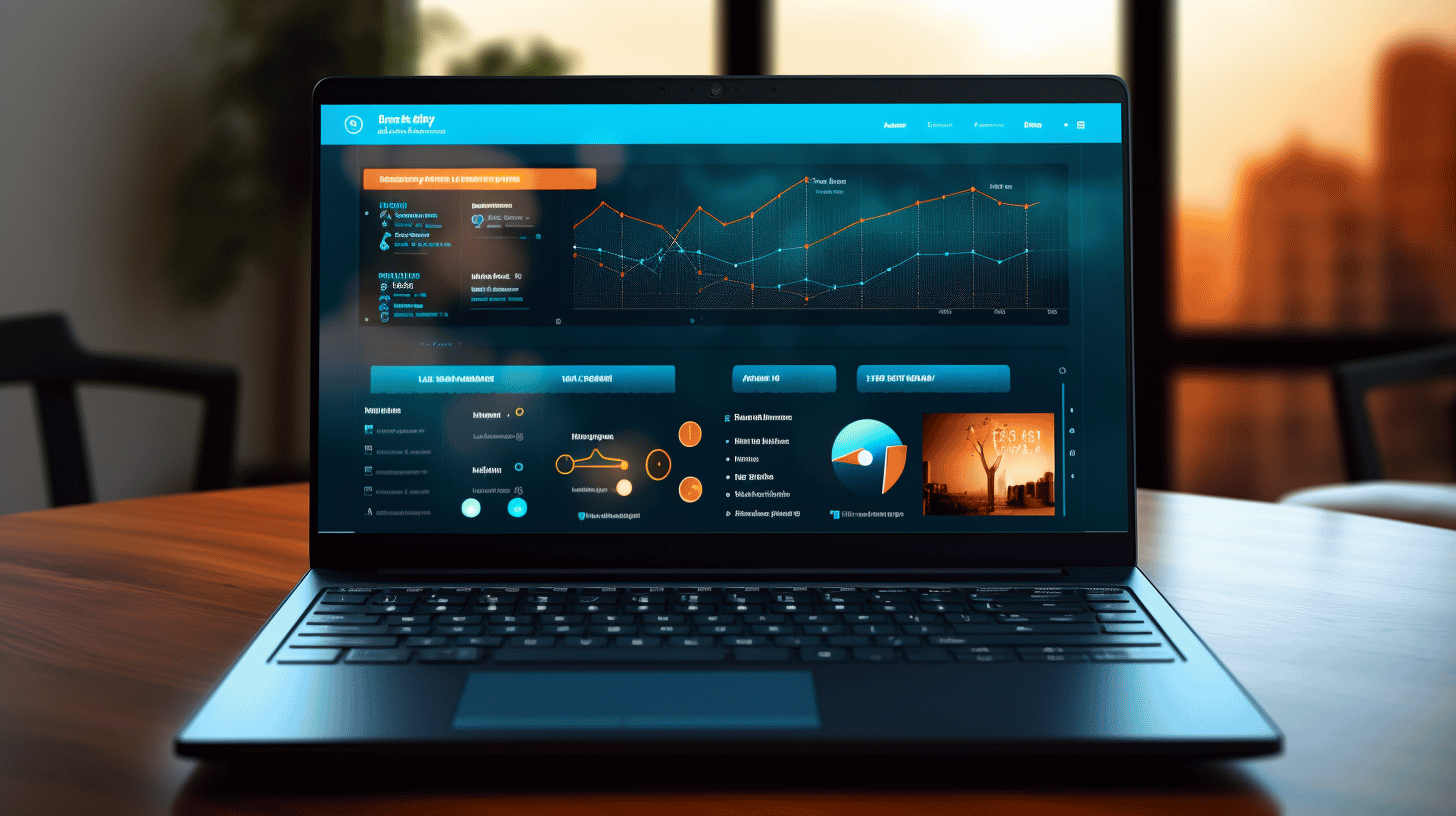在当今的数字环境中,保护您的 IT 基础设施至关重要,尤其是如果您是 WordPress 网站所有者。随着网络威胁不断增加,黑客变得越来越老练,采取主动措施保护您的宝贵数据并确保您的网站顺利运行至关重要。
在本综合指南中,我们将探讨网络安全的现状、云和服务器安全的未来发展、数据泄露的成本,以及最重要的是,您可以为 WordPress 网站实施的具体安全措施。无论您是小企业主还是经验丰富的网站开发人员,本指南都将为您提供知识和工具,以保护您的网站并保持安心。
因此,让我们深入研究并加强您的 IT 基础设施以抵御潜在威胁! 🔒
网络安全现状
当前的网络安全状况比以往任何时候都更加严峻。随着技术的进步和在线威胁的增加,组织必须保持警惕,以保护其敏感数据和网络。在本节中,我们将讨论一些预期的重大违规行为、网络犯罪造成的惊人损失、基于云的违规行为的增加以及生成式 AI 在网络钓鱼攻击中的作用。
预期重大违规行为
根据最近的一项调查,高达 77% 的安全领导者预计关键基础设施将遭遇重大入侵。这令人担忧,因为此类入侵可能产生深远影响,不仅影响目标组织,还可能危及基本服务和系统。随着黑客使用的策略不断演变,企业必须采取主动和多层次的方法,确保实施全面的安全措施。
网络犯罪损害
网络犯罪的财务影响确实令人震惊。据估计,2021 年网络犯罪造成的损失将超过每年 $6 万亿美元。这个天文数字凸显了组织在财务损失、声誉损害和潜在法律责任方面面临的重大威胁。从勒索软件攻击到数据泄露,这些网络犯罪的后果对小型企业和大型企业来说都是毁灭性的。
基于云的漏洞
云计算的采用彻底改变了企业的运营方式,提供了灵活性、可扩展性和成本效益。然而,它也带来了新的安全挑战。根据最近的研究,45% 的违规行为与云有关,而在过去一年中,有 80% 的公司至少经历过一次云安全事件。这凸显了实施强大的安全措施以保护存储在云中的敏感数据并确保实施严格的访问控制的重要性。
生成式人工智能与网络钓鱼攻击
人工智能的进步不仅使合法应用程序受益,而且还被网络犯罪分子用来策划高度复杂的网络钓鱼攻击。生成式人工智能工具使攻击者更容易创建令人信服的个性化网络钓鱼电子邮件,使用户越来越难以区分合法邮件和恶意邮件。事实上,多达 85% 的安全专家将生成式人工智能工具归咎于网络钓鱼攻击数量的增加。组织必须优先考虑员工教育,并实施先进的电子邮件过滤器和安全措施,以减轻成为这些欺骗性攻击受害者的风险。
网络安全是一场持久战,要领先于不断演变的威胁,需要持续的努力和投资。通过采取积极主动和全面的安全方法,组织可以最大限度地降低风险并保护其宝贵资产免受日益增长的威胁。
要了解有关网站安全以及如何保护您的业务的更多信息,请查看 掌握网站安全.
云和服务器安全:未来发展和当前漏洞
在当今数据为王的数字时代,确保云和服务器系统的安全至关重要。随着企业越来越依赖云服务来存储、计算能力和软件应用程序,云市场的增长潜力不容置疑。与此同时,安全漏洞的威胁也越来越大,服务器漏洞是网络犯罪分子的主要目标。让我们深入探讨云行业的未来增长前景和服务器安全漏洞的现状。
云计算细分市场的未来增长
到 2024 年,所有云细分市场预计都将经历大幅增长。然而,基础设施即服务 (IaaS) 预计将出现最显著的需求增长。随着公司认识到将基础设施管理转移给云服务提供商的好处,IaaS 市场预计将大幅增长。这种增长受到可扩展性、成本效益和快速按需配置资源的能力等因素的推动。
从更大角度来看,预计未来几年整个云市场将实现 XX% 的复合年增长率 (CAGR),到 2025 年市场规模将达到 $XXX 亿。这种指数级增长可归因于云服务提供的众多优势,包括:
- 灵活性:云基础设施使企业能够根据需求扩大或缩小其资源,从而在快速变化的商业环境中实现更高的灵活性。
- 节省成本:通过利用云服务,组织可以减少在硬件和物理基础设施上的资本支出,以及维护和升级相关的成本。
- 可访问性:云计算使员工可以随时随地轻松访问数据和应用程序,从而促进远程工作和协作。
- 增强的安全性:云服务提供商投入巨资实施强大的安全措施,这些措施通常超出单个公司单独能够实现的水平。
服务器安全漏洞
虽然云市场提供了良好的增长机会,但必须承认服务器安全方面存在挑战。服务器仍然是网络犯罪分子的主要目标,令人震惊的统计数据显示,90% 的安全漏洞是通过服务器漏洞攻击发生的。这凸显了采取强有力的安全措施和持续监控以保护敏感数据并防止未经授权的访问的迫切需求。
服务器入侵的后果可能是灾难性的,包括经济损失、声誉受损、法律后果和客户信任丧失。为了降低风险,公司必须采取主动措施,包括:
- 定期修补和更新: 确保服务器安装最新的安全补丁和软件更新对于解决任何已知漏洞至关重要。
- 强大的身份验证和访问控制: 实施严格的访问控制、多因素身份验证和强密码策略有助于防止未经授权的服务器访问。
- 网络分段: 将网络划分为受限访问的部分可以遏制潜在的漏洞并限制攻击者的横向移动。
- 持续监控和入侵检测系统: 部署强大的监控系统来检测任何可疑活动或未经授权的访问尝试,可以迅速采取行动来减轻潜在的威胁。
总之,虽然云服务的未来增长无疑前景光明,但必须主动解决服务器安全漏洞。公司必须投资于强大的安全措施、员工意识培训和定期的系统审核,以保护其宝贵的数据并防止潜在的漏洞。通过保持警惕并采取安全第一的心态,企业可以满怀信心地应对不断变化的云和服务器安全格局。
数据泄露的成本和变量
数据泄露已成为当今数字环境中的重大问题。它们不仅会造成经济损失,还会给企业带来长期影响。了解与数据泄露相关的成本和变量对于组织有效降低风险至关重要。在本节中,我们将探讨数据泄露的平均成本、针对工业运营的网络攻击激增、远程劳动力对数据泄露成本的影响以及平均网络保险索赔的增加。
数据泄露的平均成本
根据最近的统计数据,2023 年数据泄露的平均成本为 $445 万美元[1]。违规行为的财务影响不仅限于直接的财务损失。它还包括与事件响应、调查、法律费用和监管罚款相关的费用。此外,还有间接成本,例如声誉受损、客户流失和客户信任度下降。
工业运营网络攻击激增
2022 年,针对工业运营的网络攻击激增了 140%[2]制造业、能源和交通等工业领域日益成为网络犯罪分子的目标。这些攻击背后的动机各不相同,从获取经济利益到破坏关键基础设施。此类攻击不仅造成重大经济损失,还对公共安全构成威胁。
远程员工对数据泄露成本的影响
随着远程办公的出现,数据泄露事件出现了惊人的增长。采用远程办公模式的组织必须调整其安全协议以确保敏感信息的保护。不幸的是,与没有远程办公因素的泄露相比,远程办公导致的泄露平均总成本高出 $173,074[3]。这凸显了实施强有力的安全措施来保护远程工作环境的重要性。
平均网络保险索赔金额上升
随着数据泄露变得越来越普遍和复杂,对网络保险的需求也随之增加。网络保险在发生数据泄露或网络攻击时提供财务保护。平均网络保险索赔额从 2019 年的 $145,000 上升到 2020 年的 $359,000[4]平均索赔金额的大幅增长反映了与数据泄露相关的成本不断上升,以及需要足够的保险来减轻财务风险。
数据泄露的后果深远,不仅限于经济损失。组织必须积极主动地实施强有力的安全措施,并随时了解不断变化的网络威胁形势。通过了解与数据泄露相关的成本和变量,企业可以更好地保护其敏感数据并最大限度地减少潜在泄露的影响。
“数据泄露的后果深远,不只是经济损失。组织必须积极主动地实施强有力的安全措施,并随时了解不断变化的网络威胁形势。”
WordPress 安全措施
WordPress 是全球最受欢迎的内容管理系统 (CMS) 之一,为数百万个网站提供支持。然而,它的受欢迎程度也使其成为黑客的诱人目标,他们一直在寻找漏洞进行利用。为了保护您的 WordPress 网站免受潜在的安全威胁,实施有效的安全措施非常重要。在本文中,我们将讨论一些基本的 WordPress 安全实践,这些实践可以帮助保护您的网站并确保其顺利运行。
更新 WordPress 版本和插件
确保 WordPress 安全性的最重要步骤之一是保持 WordPress 版本和插件为最新版本。定期更新通常包括安全补丁、错误修复和新功能,这些功能可以提高网站的整体安全性和稳定性。以下是一些需要考虑的关键点:
- 更新 WordPress:当 WordPress 发布新版本时,请务必将您的网站更新到最新版本。这将有助于解决任何已知漏洞并确保您的网站安全。
- 更新插件:定期检查插件更新,并在更新可用时立即应用。过时的插件可能会成为您网站安全的薄弱环节,因此积极主动地更新插件非常重要。
- 删除未使用的插件:卸载不再使用的插件。未使用的插件可能会过时并带来安全风险。
使用强大且独特的密码
WordPress 安全性的另一个重要方面是使用强大而独特的密码。弱且容易猜到的密码可能会使您的网站容易受到暴力攻击。请遵循以下密码安全性最佳实践:
- 使用字母、数字和特殊字符的组合:创建包含大小写字母、数字和特殊字符的密码。这种组合使黑客更难猜测或破解您的密码。
- 避免使用常见密码:远离容易猜到的密码,例如“password123”或“123456789”。这些是黑客最先尝试的密码。
- 使用密码管理器:考虑使用密码管理器为您的 WordPress 网站生成和存储强大而独特的密码。这可确保您不会在多个帐户中重复使用密码,从而进一步增强您的安全性。
SSL 证书、双因素身份验证和安全插件的实施
除了更新 WordPress 版本和使用强密码外,您还可以实施其他安全措施来进一步增强网站的安全性。请考虑以下几点:
- SSL 证书:在您的网站上安装并启用 SSL 证书。SSL 代表安全套接字层,可加密您的网站与访问者之间传输的数据。这可确保敏感信息(例如登录凭据)不被恶意行为者拦截。
- 双因素身份验证 (2FA):为您的 WordPress 登录启用双因素身份验证。2FA 要求用户除了提供密码外,还要提供额外的验证码(通常发送到他们的移动设备)。这增加了一层额外的安全保护,以防止未经授权的访问。
- 安全插件:安装信誉良好的安全插件,这些插件可以帮助检测和缓解潜在的安全威胁。这些插件通常提供防火墙保护、恶意软件扫描和活动监控等功能。
从 WordPress 仪表板禁用插件和主题管理
一个好的 WordPress 安全做法是从 WordPress 仪表板禁用插件和主题管理,改用命令行工具。这通过限制潜在的攻击面增加了一层额外的保护。原因如下:
- 限制对插件和主题管理的访问:通过限制对插件和主题管理的访问,您可以降低可能危害网站安全的未经授权的更改或安装的风险。
- 使用命令行工具:不要仅仅依赖 WordPress 仪表板,而是使用 WP-CLI 等命令行工具来管理插件和主题。这可以最大限度地降低因插件或主题配置错误而导致漏洞的风险。
通过实施这些 WordPress 安全措施,您可以显著降低网站遭受安全漏洞攻击的风险。请记住,保持主动性并定期更新 WordPress 网站是维护安全在线状态的关键。
有关 WordPress 基本安全实践的详细信息,请查看 文章.
结论
总之,在当今的网络环境中,保护您的 IT 基础设施(尤其是对于 WordPress 网站所有者而言)至关重要。随着预期的重大漏洞、不断增加的网络犯罪损失以及基于云的漏洞和生成式 AI 和网络钓鱼攻击的日益盛行,保护您的数据和在线状态对于避免潜在的财务和声誉损害至关重要。
通过实施强大的 WordPress 安全措施,例如定期更新 WordPress 版本和插件、使用强大而独特的密码、实施 SSL 证书、双因素身份验证和安全插件,以及从 WordPress 仪表板禁用插件和主题管理,您可以大大降低潜在网络威胁的风险。
请记住,数据泄露的成本不仅是财务上的,而且对企业的整体运营也有重大影响。数据泄露的平均成本正在上升,同时工业运营网络攻击激增,远程劳动力对数据泄露成本的影响也随之增加。因此,投资全面的安全措施是保护您的业务和用户数据的明智之举。
为了简化保护 WordPress 网站的过程,请考虑与 Managed-WP™ 等可靠的 WordPress 云托管平台合作。凭借他们在基础设施管理、全天候 WordPress 支持、NOC 服务、备份管理、补丁管理和主动监控方面的专业知识,您可以放心,您的网站将得到妥善保护。
不要等到为时已晚。立即采取行动,强化您的 IT 基础设施,保护您的 WordPress 网站免受潜在的网络威胁。访问 托管-WP.com 了解有关他们的高级托管 WordPress 云托管服务的更多信息,以及他们如何帮助您在数字体验中获得安心。💪🔒
常见问题
- 为什么保护我的 IT 基础设施对于 WordPress 网站所有者来说很重要?
保护您的 IT 基础架构对于 WordPress 网站所有者来说至关重要,它可以保护敏感数据、防止未经授权的访问以及维护网站的完整性和可用性。它有助于防范网络威胁、黑客攻击和潜在的数据泄露。
- 有哪些推荐的措施来保护 WordPress 网站的安全?
为了保护 WordPress 网站的安全,您可以实施一些措施,例如使用强大而独特的密码、保持 WordPress 和插件为最新版本、使用可靠的安全插件、启用双因素身份验证、定期备份您的网站以及限制登录尝试次数。
- 有没有专门针对 WordPress 的安全插件?
是的,WordPress 有多种安全插件可以帮助增强您网站的安全性。一些流行的插件包括 Sucuri Security、Wordfence Security、iThemes Security 和 All In One WP Security & Firewall。
- 如果我的 WordPress 网站遭到黑客攻击,我应该采取什么措施?
如果您的 WordPress 网站遭到黑客攻击,您应首先隔离并保护受感染的网站,方法是暂时将其下线。更改所有密码、扫描计算机中的恶意软件、从干净的备份中恢复、更新所有插件和主题,并实施额外的安全措施以防止将来受到攻击。
- 是否有必要聘请专业人员来保护我的 WordPress 网站?
虽然聘请专业人士可以提供专业帮助来保护您的 WordPress 网站,但这并非总是必要的。通过遵循最佳实践、使用可靠的安全插件并及时了解最新的安全建议,您可以采取重要措施来保护自己的网站。



















